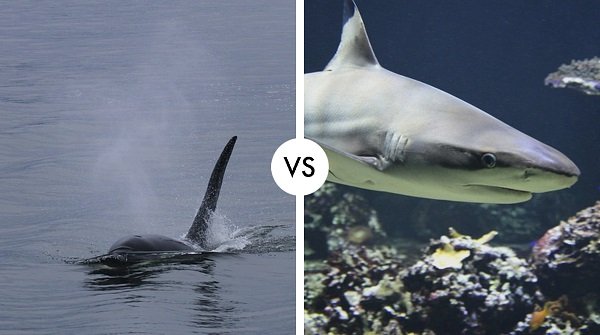G’day, wildlife enthusiasts! Today we’re going to be diving deep into the depths of the ocean to explore one of the most ferocious battles in the animal kingdom – the Great White Shark vs. the Killer Whale. These two apex predators have been battling it out for centuries, and we’re going to take a closer look at their characteristics and abilities to determine who would win in a one on one fight. So, grab your snorkel and fins, and let’s get started!
Size and Strength:
The Great White Shark is an intimidating creature with a length of up to 20 feet and a weight of over 5,000 pounds. It has a powerful jaw and rows of sharp teeth that can easily rip through flesh. On the other hand, the Killer Whale can grow up to 30 feet and weigh up to 10,000 pounds, making it the larger of the two predators. It has a strong, muscular body and a massive tail that can generate a lot of force. While the Great White Shark is no doubt a formidable opponent, the Killer Whale’s sheer size and strength give it the edge in this category.
Fighting Experience and Technique:
The Great White Shark is a skilled hunter that uses stealth and speed to catch its prey. It has a keen sense of smell and can detect a drop of blood in a million drops of water. The Killer Whale, on the other hand, is a highly intelligent and social animal that hunts in packs. It uses its large size and strength to overpower its prey and has been known to beach itself to catch seals. While the Great White Shark has impressive technique, the Killer Whale’s experience in hunting in packs and its unique tactics give it the advantage.
Aggressiveness and Temperament:
The Great White Shark has a notorious reputation for its aggressiveness and has been known to attack humans unprovoked. However, it generally only attacks when it mistakes a human for its prey. The Killer Whale, on the other hand, is not typically aggressive towards humans, but it can be highly territorial and will attack other animals that encroach on its territory. In a one on one fight, the Killer Whale’s territorial and aggressive nature may give it the upper hand.
Speed and Agility:
The Great White Shark is an incredibly fast swimmer and can reach speeds of up to 35 miles per hour. It is also highly maneuverable and can quickly change direction. The Killer Whale is not as fast as the Great White Shark, but it is still a powerful swimmer and can reach speeds of up to 30 miles per hour. It is also highly agile and can make quick turns and movements. While both predators are speedy and agile, the Great White Shark’s faster speed and maneuverability give it the edge in this category.
Endurance and Stamina:
The Great White Shark has a reputation for its incredible endurance and stamina. It can swim for hours without rest and has been known to follow its prey for long distances. The Killer Whale is also a high-endurance predator and can swim for hours at a time. However, in a prolonged fight, the Great White Shark’s impressive endurance and stamina may give it an advantage.
Weapons or Defensive Mechanisms:
The Great White Shark’s primary weapon is its sharp teeth, which it uses to rip through flesh. It also has rough skin that helps protect it from attacks. The Killer Whale’s main weapon is its powerful tail, which it uses to stun and attack its prey. It also has a thick layer of blubber that helps protect it from attacks. In a one on one fight, the Killer Whale’s powerful tail may give it the upper hand.
Ability to Finish Opponent:
Both predators have the ability to finish off their opponents. The Great White Shark’s sharp teeth and powerful bite can quickly take down its prey. The Killer Whale can use its massive size and strength to crush and overpower its prey. However, the Killer Whale has been known to play with its prey, sometimes keeping it alive for hours before finally killing it. In a one on one fight, the Killer Whale’s ability to take down its opponent quickly may give it the advantage.
Prey: The Great White Shark’s primary prey is seals, sea lions, and other smaller marine mammals. It has also been known to attack larger prey such as whales and dolphins. The Killer Whale’s diet consists of fish, squid, and other marine mammals such as seals, sea lions, and even other species of whales. Both predators have a varied diet and are capable of taking down large prey.
Winner: So, who would win in a one-on-one fight between the Great White Shark and the Killer Whale? Based on their characteristics and abilities, it’s a tough call. The Killer Whale’s larger size and strength, as well as its ability to hunt in packs and use its powerful tail, give it the advantage. However, the Great White Shark’s impressive speed and maneuverability, as well as its sharp teeth and endurance, cannot be underestimated.
Taking all of these factors into account, I would give the Killer Whale a 70% chance of winning in a one on one fight with the Great White Shark. While the Great White Shark is a formidable predator, the Killer Whale’s sheer size, strength, and aggressive nature make it the more likely winner in a head-to-head battle. However, it’s important to remember that these are both incredible animals with unique abilities and characteristics and that in the wild, anything can happen.




